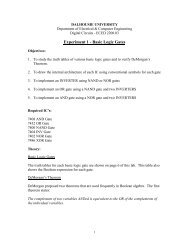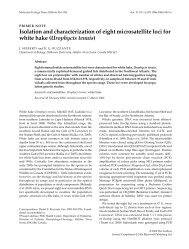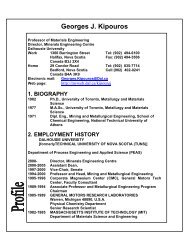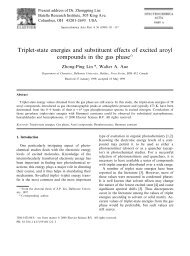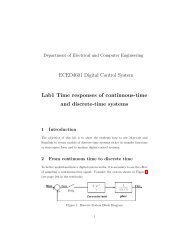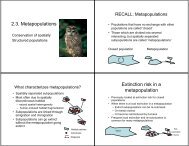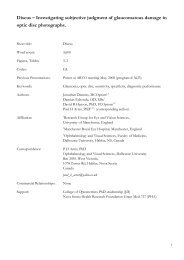Presentation notes: Vinci: Maja Jaakson - Myweb.dal.ca
Presentation notes: Vinci: Maja Jaakson - Myweb.dal.ca
Presentation notes: Vinci: Maja Jaakson - Myweb.dal.ca
Create successful ePaper yourself
Turn your PDF publications into a flip-book with our unique Google optimized e-Paper software.
P r e s e n t a t i o n n o t e s – V i n c i C h a p t e r 6 - P a g e | 8<br />
• <strong>Vinci</strong> establishes he will argue that Part I concerns intuitions subject to the <strong>ca</strong>tegories<br />
proper, while Part II concerns intuitions subject to schematized <strong>ca</strong>tegories<br />
iii. third distinction<br />
• Internal vs. external involvement of an intuition in synthetic activity<br />
• <strong>Vinci</strong> argues the intuitions discussed in Part II are “unified by internal appli<strong>ca</strong>tions of<br />
judgment”<br />
• Important for nomic prescriptivism<br />
• Key: Part I and Part II intuitions need different arguments in support of their being unified<br />
• Sense-impressions are directly relevant to establishing why Part II needs an argument that<br />
differs from the one presented in Part I: they render the first premise of <strong>Vinci</strong>’s<br />
reconstructed argument false. Deficiency of the Sellarsian story.<br />
• <strong>Vinci</strong> maintains the perception of perceptually present objects occurs by way of unified<br />
empiri<strong>ca</strong>l intuitions, not occur by way of sense impressions<br />
• <strong>Vinci</strong>’s reading provides a better understanding of Kant’s claim that the §20 conclusion is<br />
made in relation to only a partly characterized notion of empiri<strong>ca</strong>l intuition; also accounts<br />
for Kant’s claim that Part I is only a beginning.<br />
2.5: The argument of Section 26<br />
• Four themes: 1) nomic prescriptivism; 2a) synthesis of apprehension, 2b) synthesis’<br />
conformity to the unity of space and time; 3) unity present in intuitions in general<br />
transferred to empiri<strong>ca</strong>l intuitions; 4) all synthesis stands under the <strong>ca</strong>tegories.<br />
• Two arguments require reconstruction: one supporting the claim that “intuitions of<br />
perceptually present objects are intellectually unified”; another for the claim that “the<br />
unities of space and time are now part of intellectual conditions”<br />
• The A-deduction provides a guide.<br />
• Four <strong>ca</strong>usality options: <strong>Vinci</strong> prefers option D, although it too has its shortcomings.<br />
- Option D: intuitions of objects not perceptually present to us are subject to the<br />
(all) unschematized <strong>ca</strong>tegories; intuitions of perceptually present objects are<br />
subject to the schematized <strong>ca</strong>tegories of <strong>ca</strong>usality and community – to the<br />
synthetic unities of space and time.<br />
2.6: A subjective deduction showing that empiri<strong>ca</strong>l intuitions are logi<strong>ca</strong>lly unified intuitions<br />
iv. Argument A<br />
v. Commentary<br />
vi. Regarding the question of “right”<br />
2.7: An objective deduction showing that the unities of space and time are part of the<br />
intellectual conditions of objective thinking



